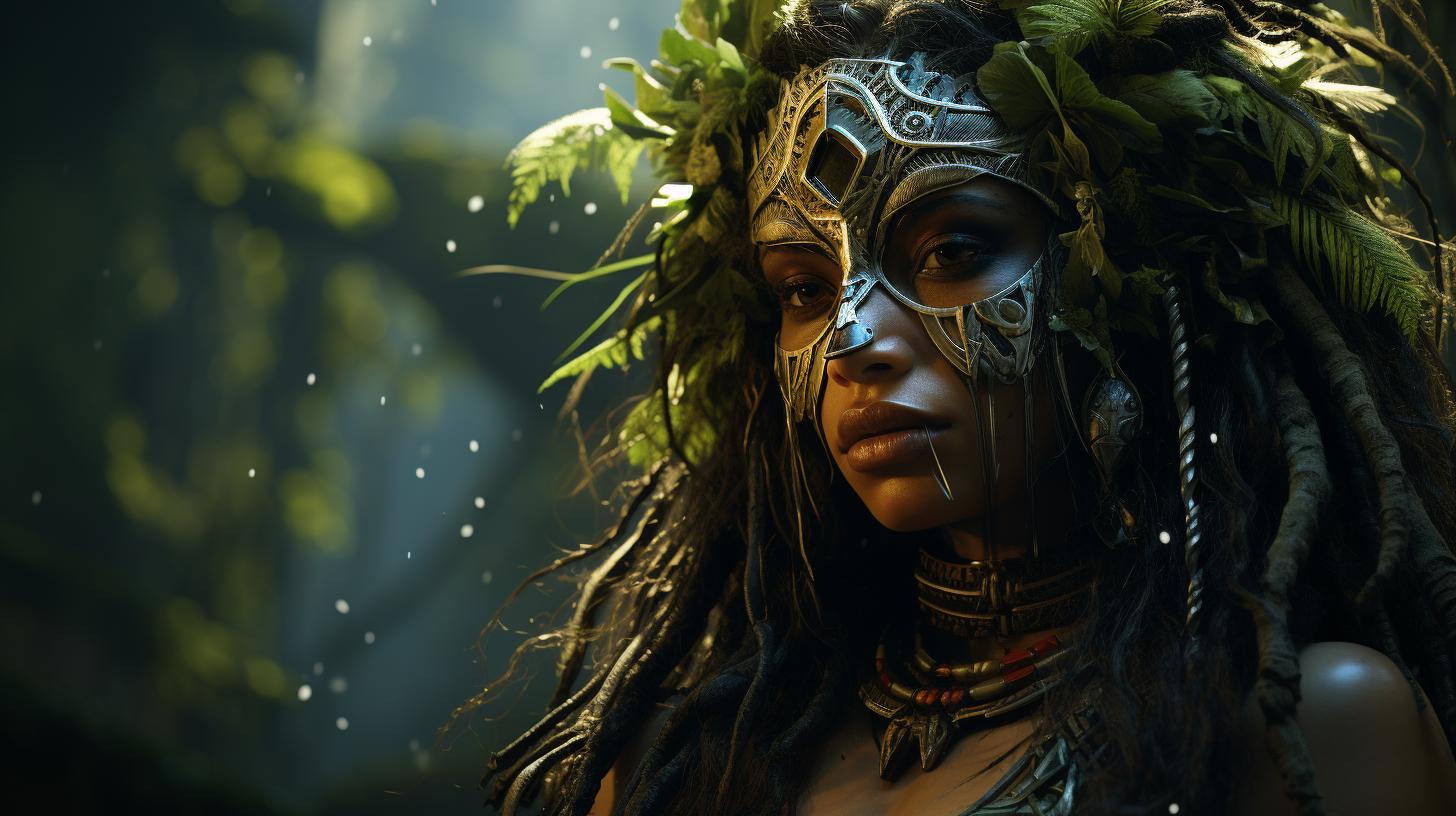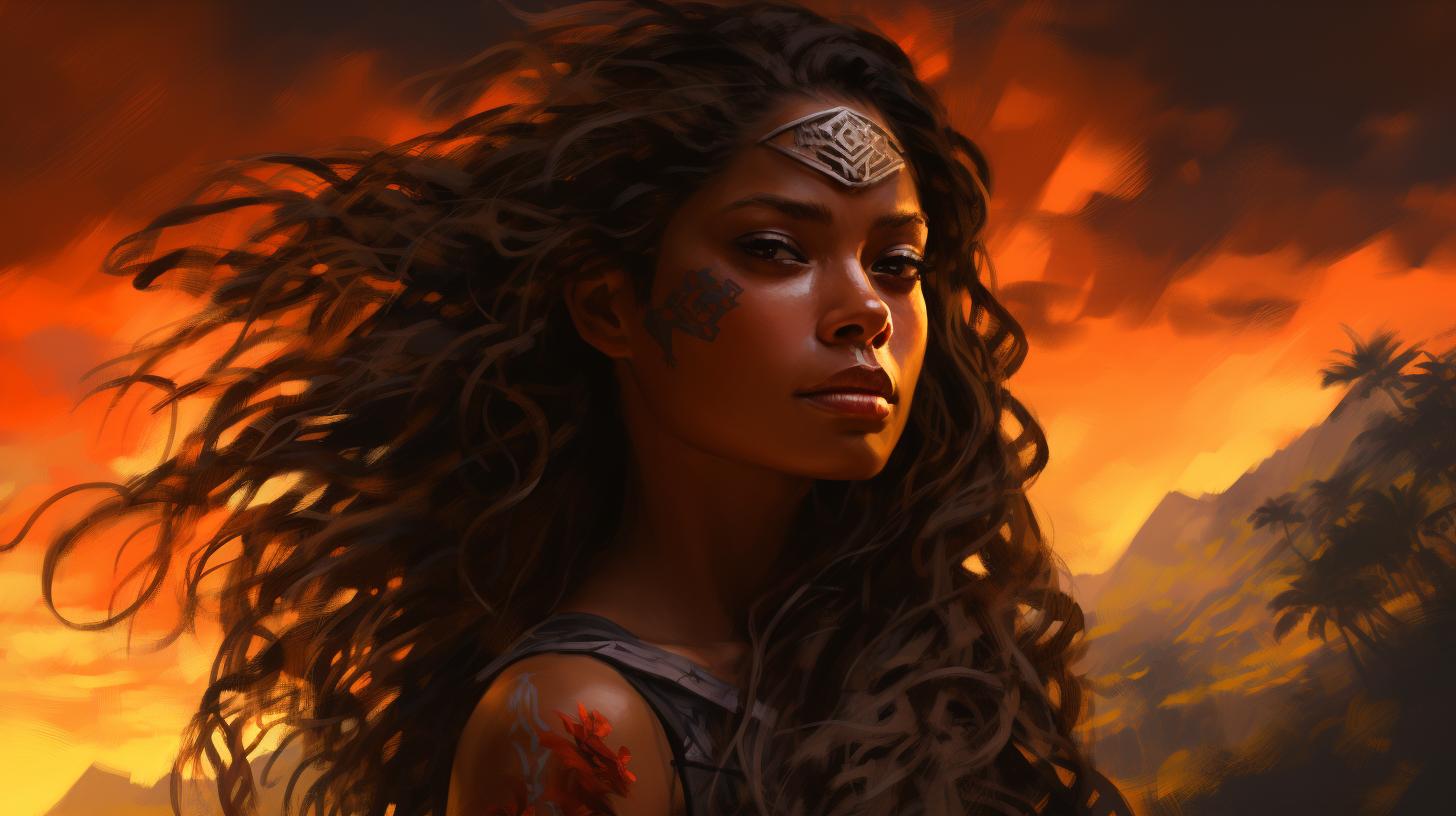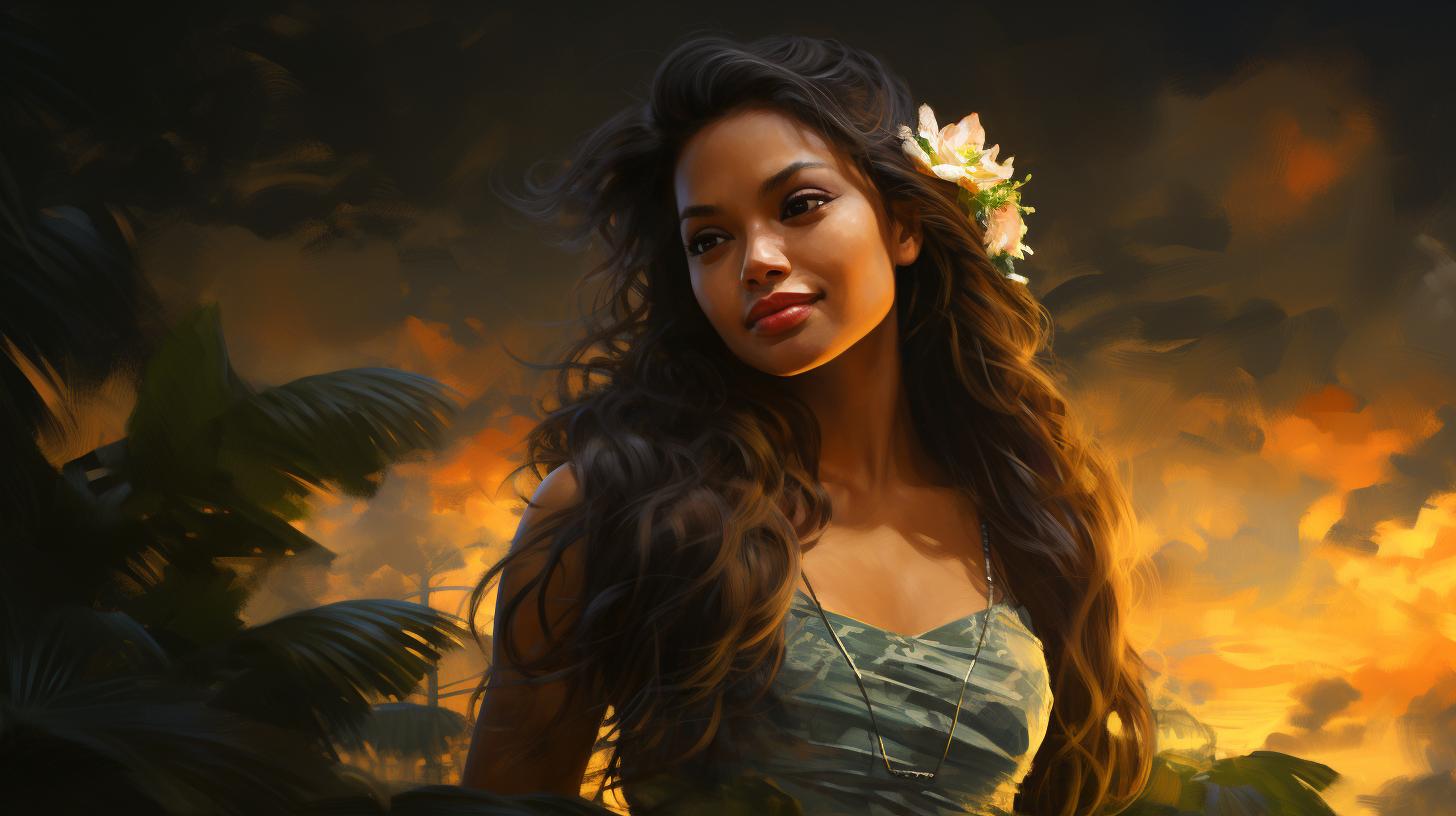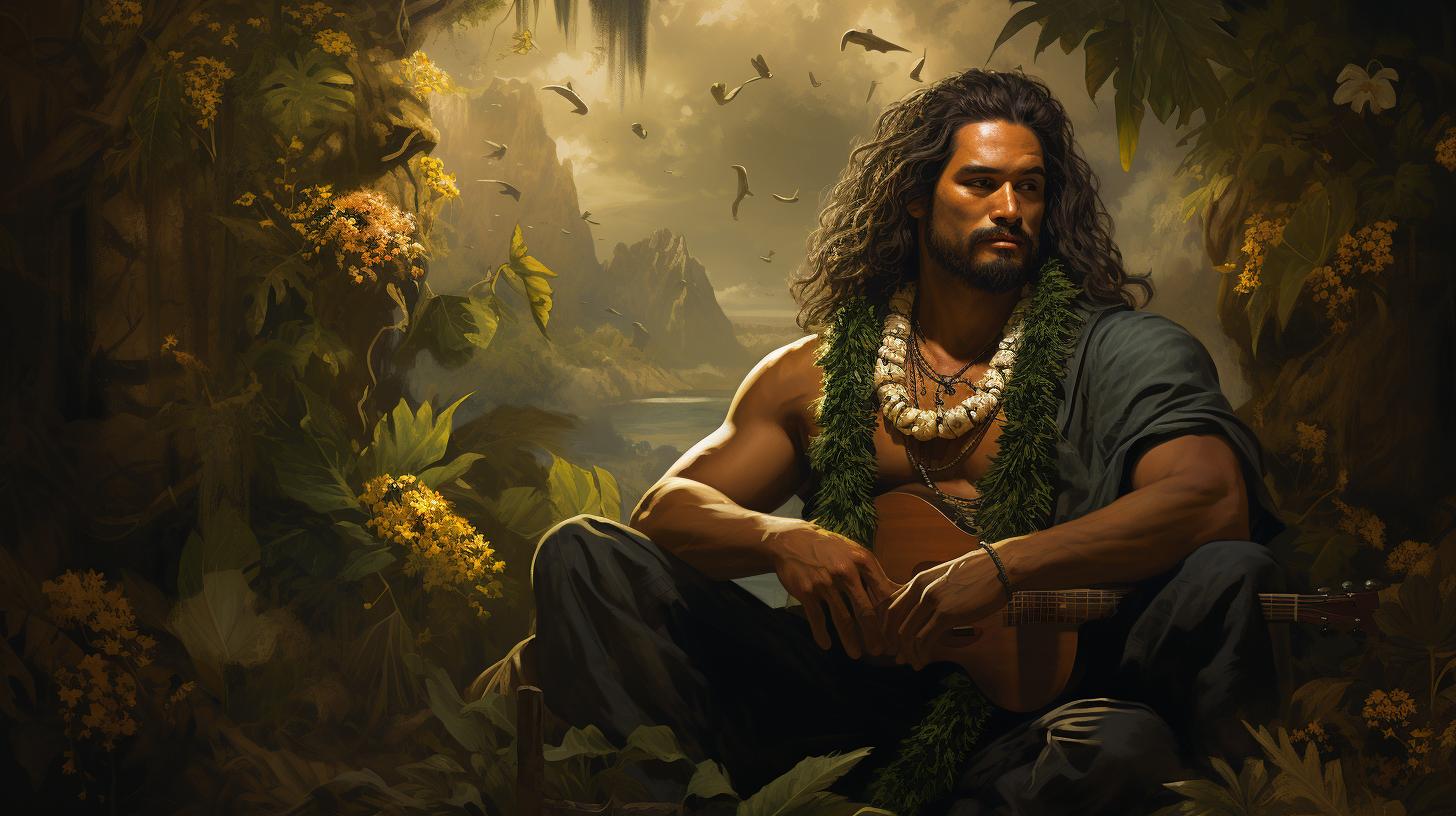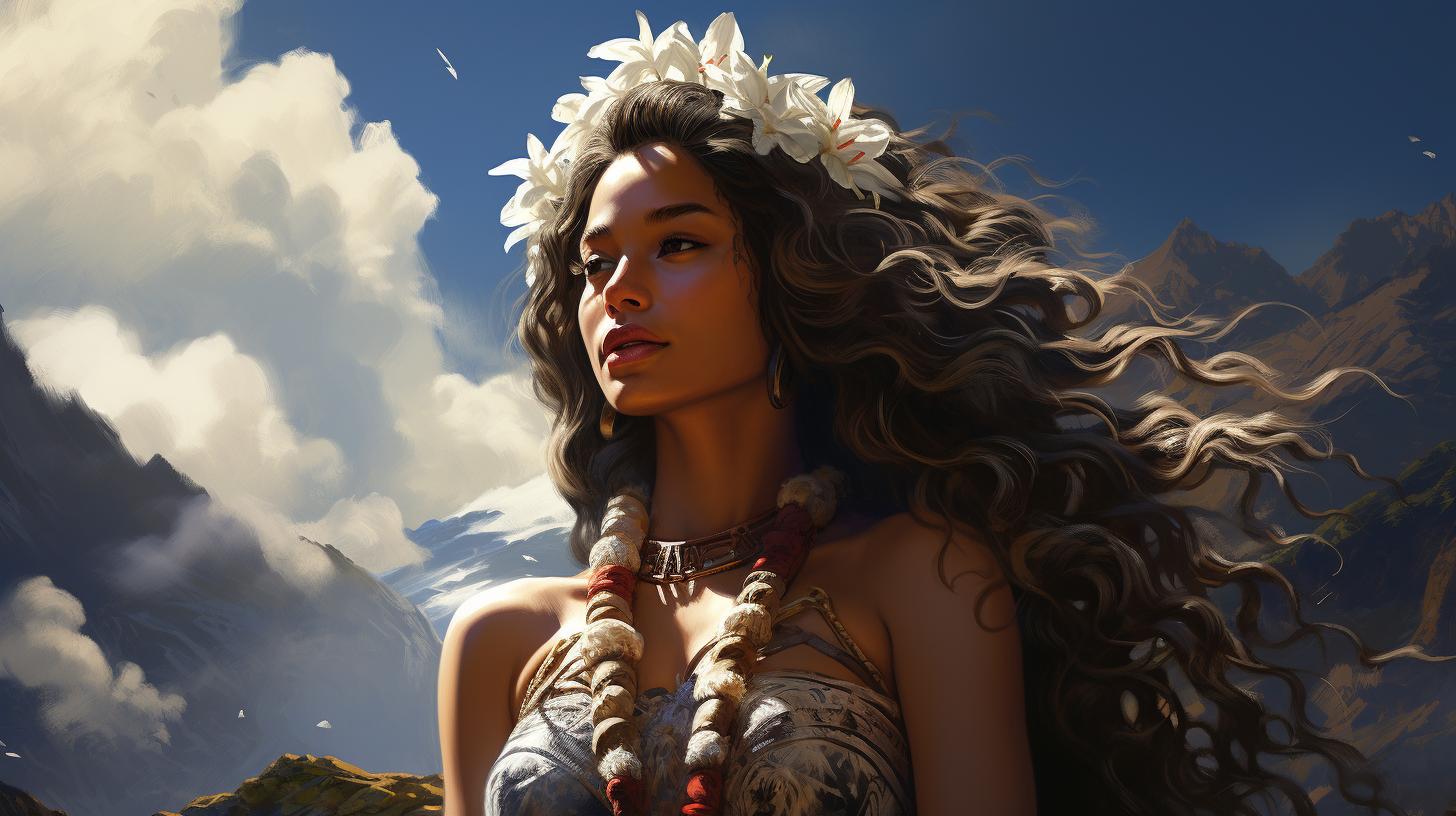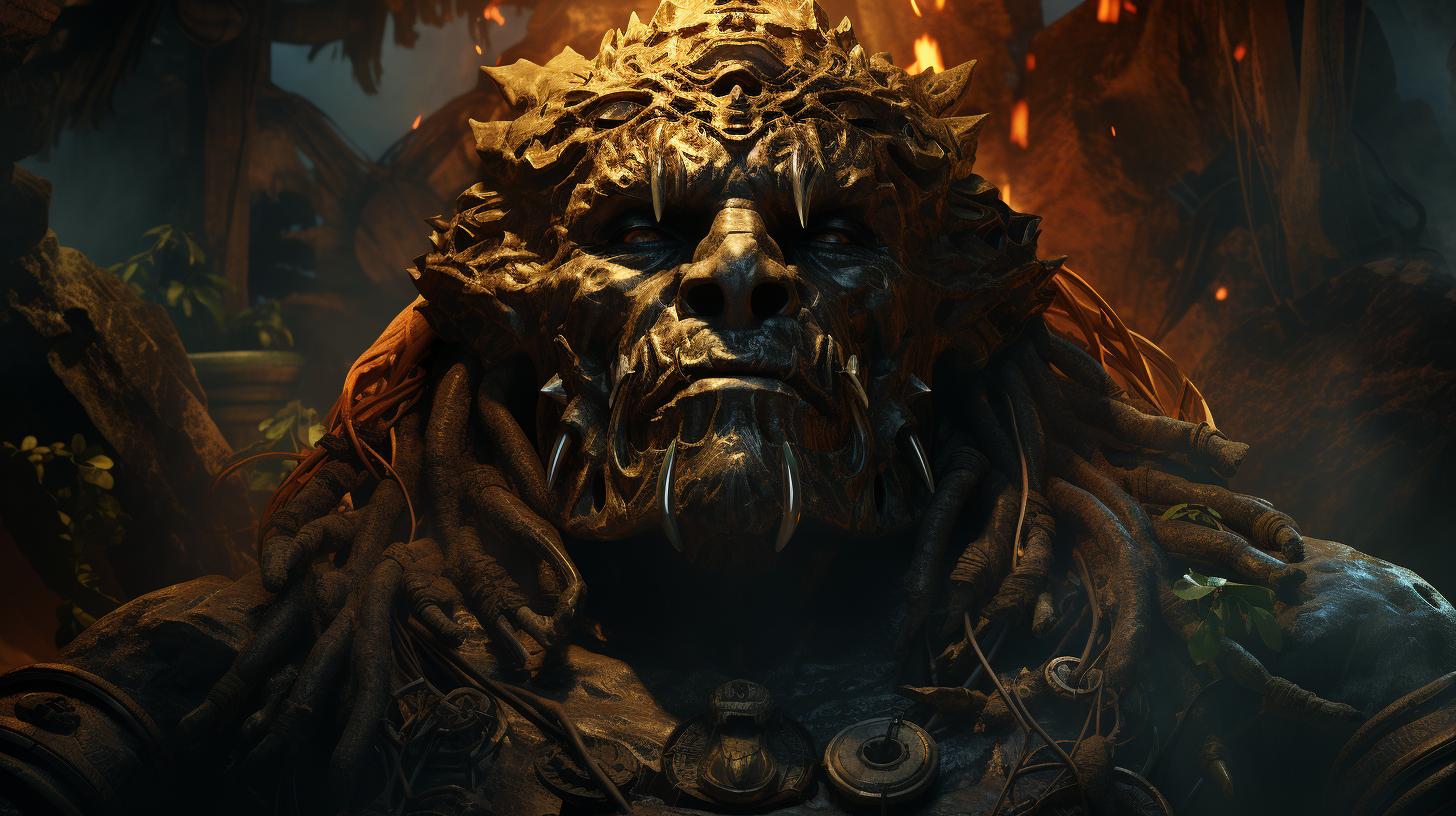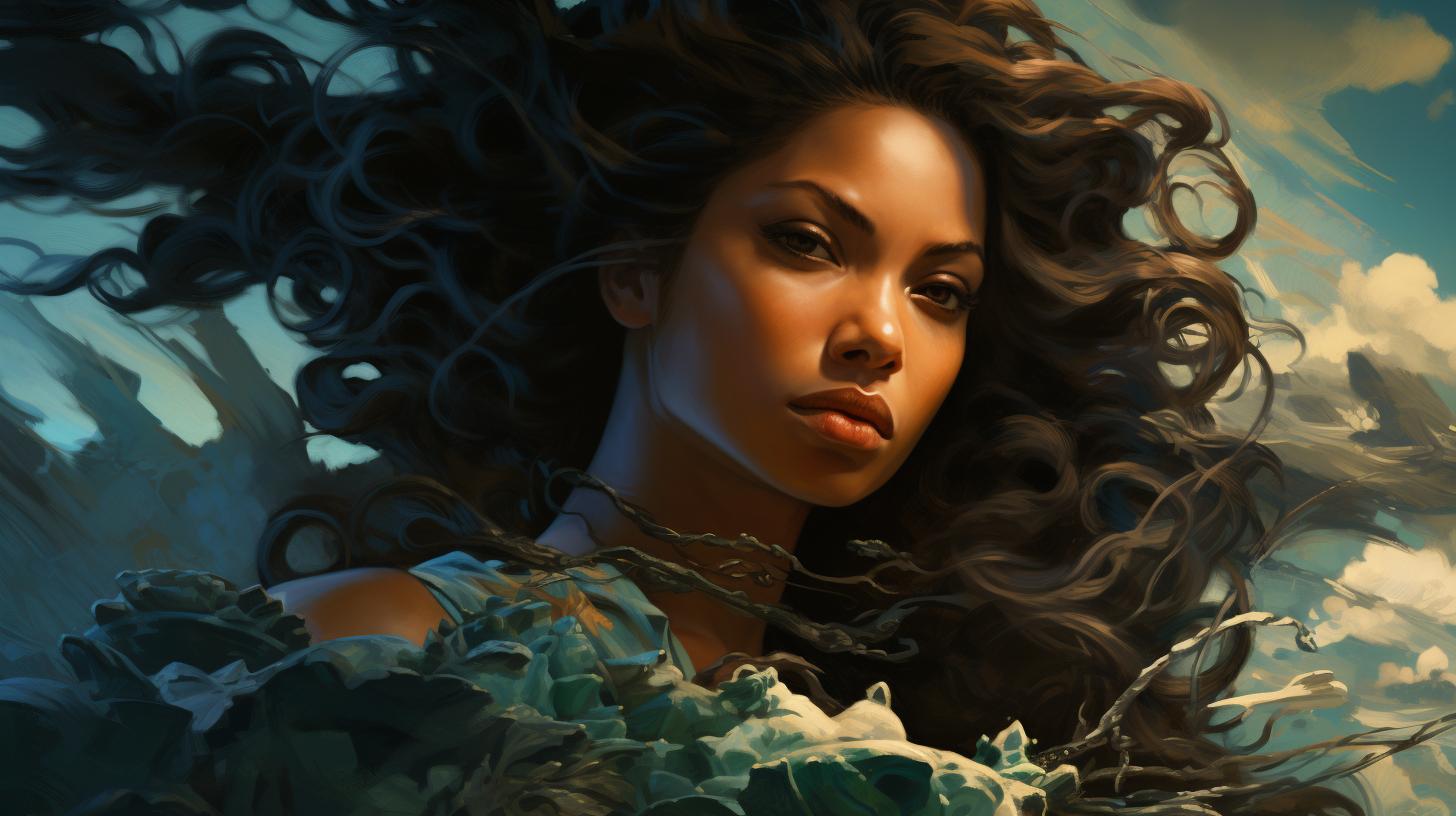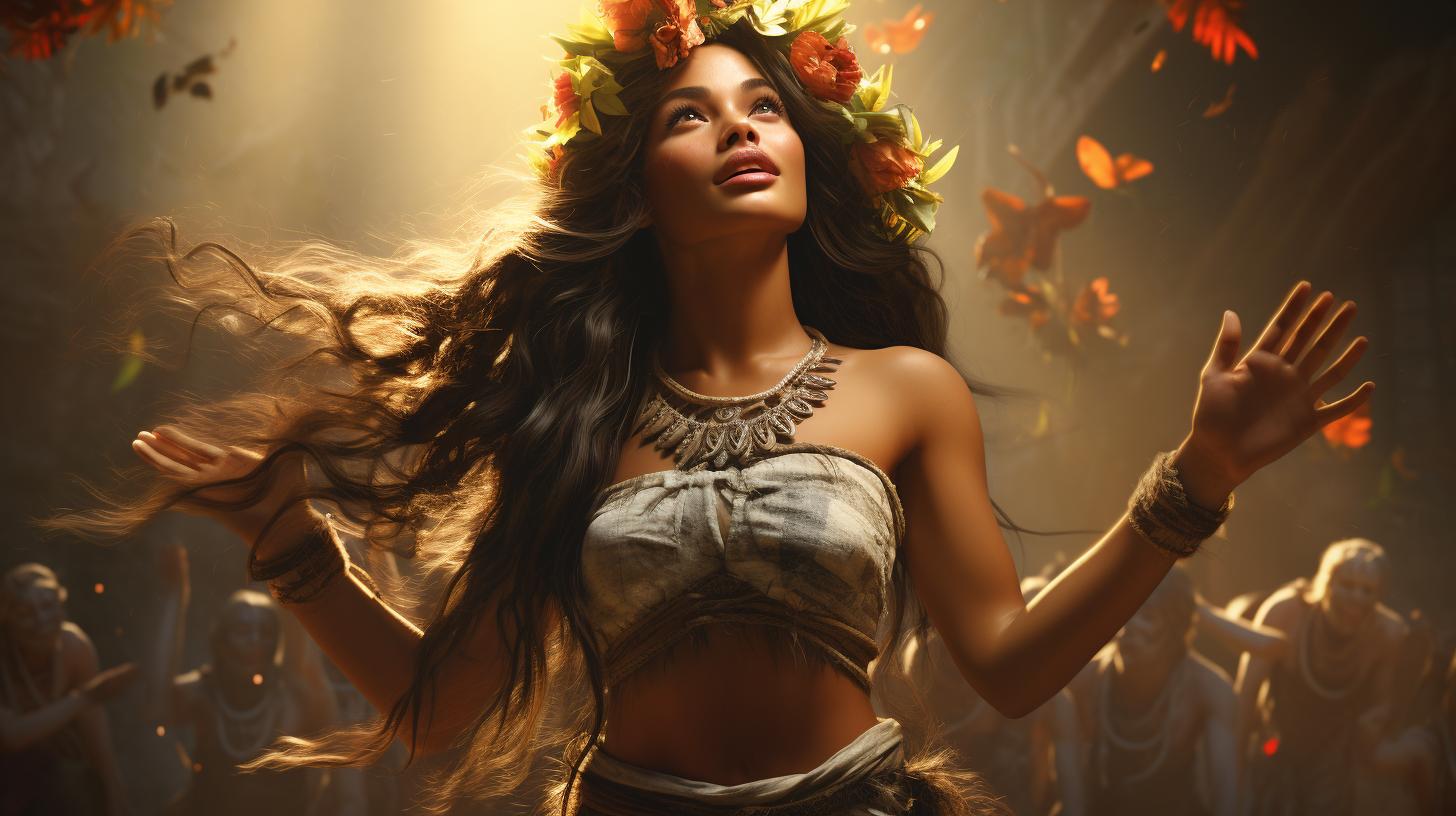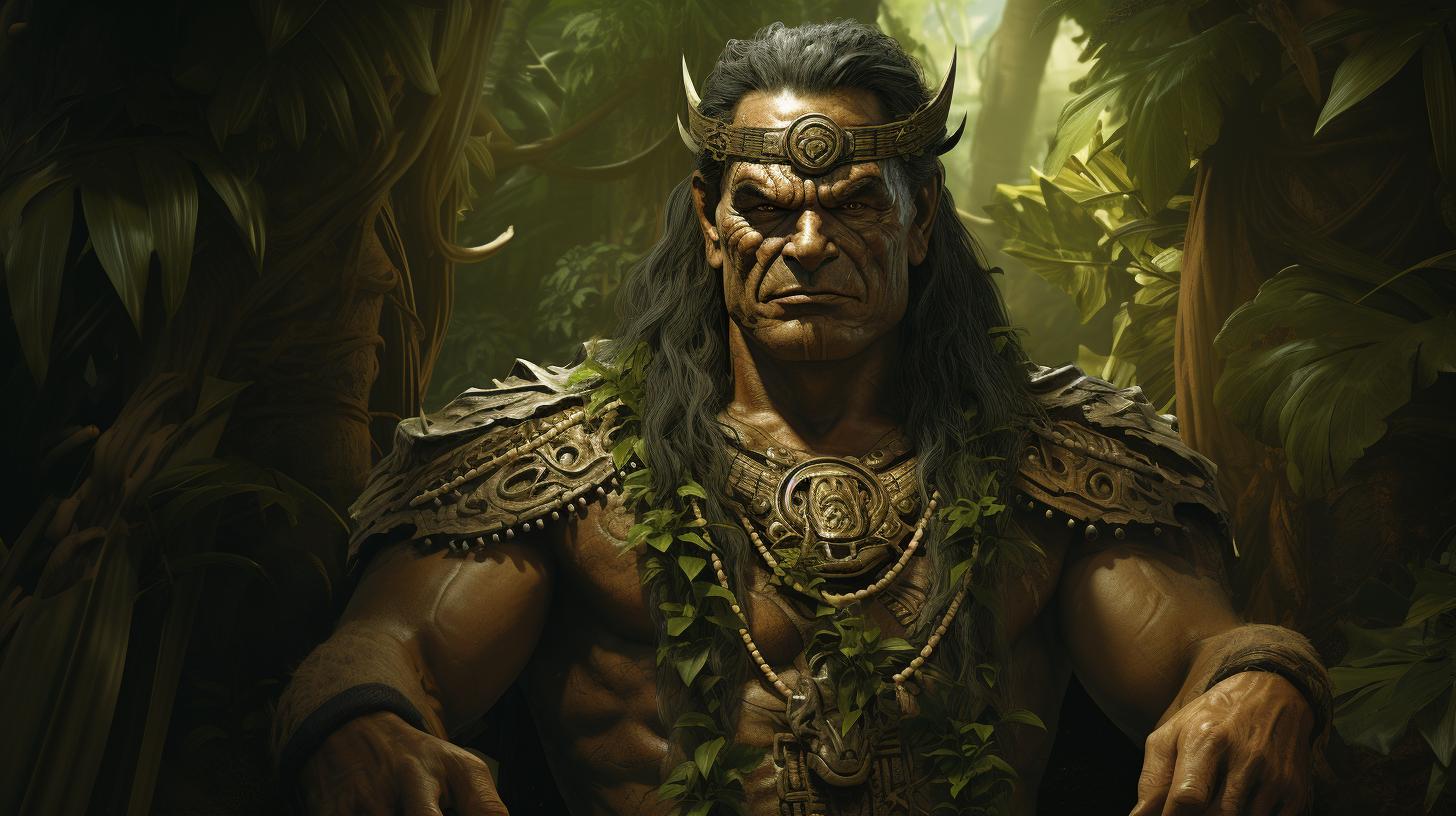Haumia Maori God: Unveiling the Mythology and Cultural Significance
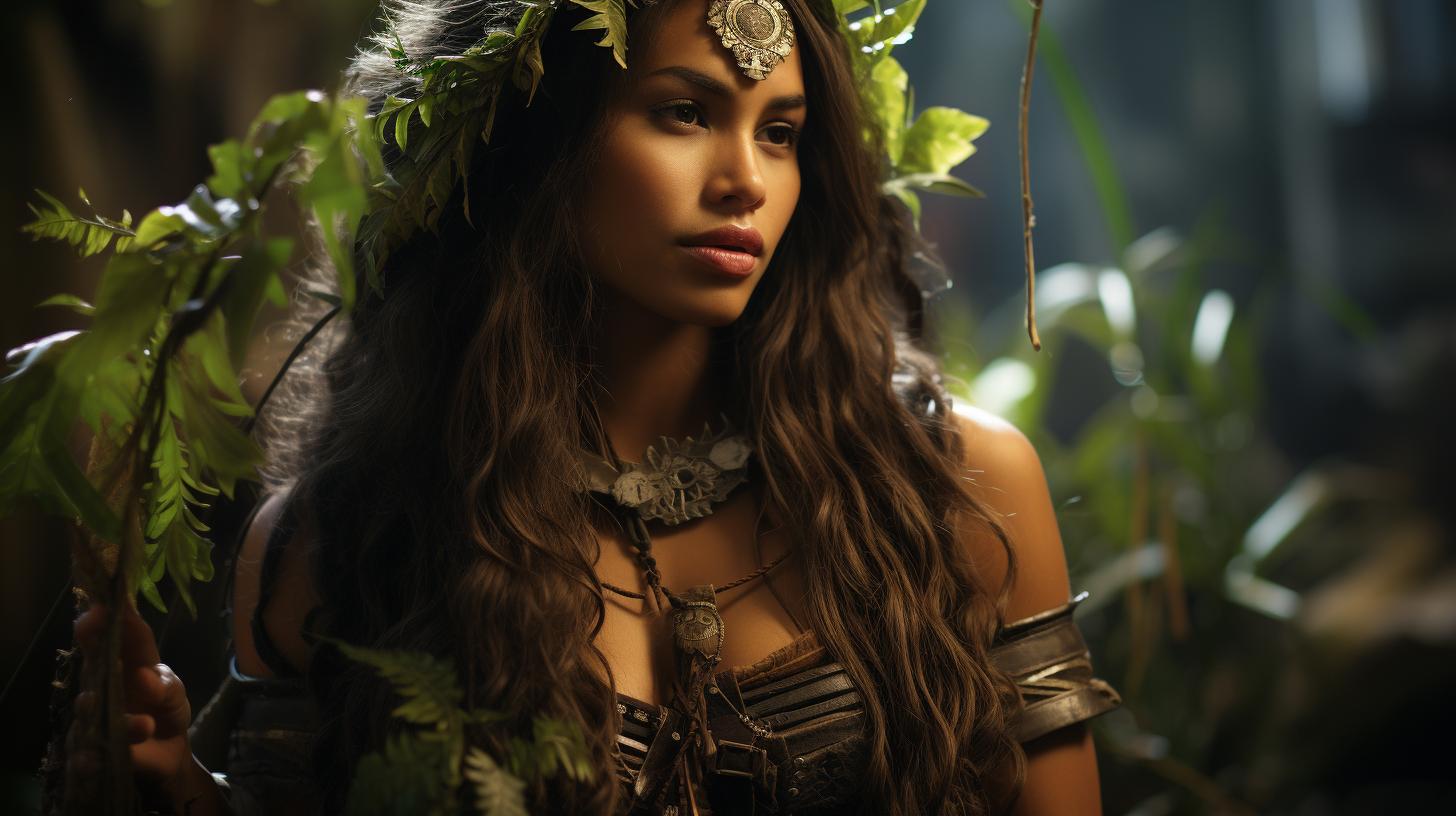
Haumia, an important deity in Māori mythology, holds the role of the god of uncultivated food. As one of the original children of Ranginui and Papatuanuku, Haumia played a part in separating the sky and earth.
He sought refuge on land and hid beneath the earth, later becoming associated with the edible rizomes of the bracken fern known as “aruhe.” Alongside his peaceful brother Rongo, Haumia embodies harmony and goodwill.
This article explores Haumia’s origins, his significance in Māori culture, and his representation in contemporary art and merchandise.
Origins of Haumia in Māori Mythology
In Māori mythology, Haumia holds a significant role as a celestial deity associated with the natural world. Through various creation myths, it is believed that Haumia emerged as a result of the union between Ranginui, the Sky Father, and Papatuanuku, the Earth Mother.
Creation Myth and Haumia’s Role
According to Māori cosmology, Ranginui and Papatuanuku were locked in a tight embrace, causing complete darkness on Earth. The union of these divine beings resulted in the birth of numerous gods, including Haumia.
In specific creation myths, Haumia played a crucial function in the separation of Rangi and Papa to bring light into the world.
Haumia as the Son of Ranginui and Papatuanuku
As one of the original children of Ranginui and Papatuanuku, Haumia holds a significant place in Māori genealogy and mythology.
He is revered as a son of the Sky Father and Earth Mother, embodying their divine essence and contributing to the balance of the natural world.
The Separation of Rangi and Papa and Haumia’s Involvement
The gods gathered in council to discuss how to separate Rangi and Papa, allowing light and life to flourish on Earth.
Haumia was amongst the divine council who attempted various methods to achieve this separation. Ultimately, it was Tane’s efforts that succeeded—using his powerful legs to raise the heavens and create space for the world to exist.
During this process, Tawhirimatea, the god of winds and storms, grew enraged at the separation of their parents. Seeking revenge, Tawhirimatea unleashed his fury upon the other gods. Haumia, along with his brother Rongo, sought refuge on Earth with their mother, Papatuanuku, covering themselves with soil to evade Tawhirimatea’s wrath.
Thus, Haumia became forever associated with uncultivated foods and plants. His concealment within the Earth and connection to the natural world solidified his role as the deity of untamed sustenance, with strong ties to the aruhe, the edible rizomes of the bracken fern.
The fronds of the bracken fern served as a distinctive marker for unearthing these edible treasures.
Haumia: The God of Uncultivated Food
Haumia, a prominent deity in Māori mythology, holds a significant role as the god of uncultivated food. This section explores Haumia’s association with edible plants, the importance of Aruhe in Māori diet, and the significance of Haumia’s hiding and the bracken fern fronds.
Haumia’s Association with Edible Plants
Haumia’s domain encompasses the realm of wild and natural foods in Māori culture. He is revered for his connection to various edible plants that grow freely in the wild. These plants, such as the aruhe, symbolize sustenance derived directly from the land, without the need for cultivation or human intervention.
The Importance of Aruhe in Māori Diet
The aruhe, often referred to as the edible rizome of the bracken fern, holds great significance in the traditional Māori diet. This starchy root was a staple food source that provided nourishment throughout the year.
Māori communities excavated these rizomes from the earth, cooked them, and transformed them into delicious cakes.
The aruhe played a central role in sustaining Māori communities, showcasing the deep connection between Haumia and the natural bounty of the land.
The consumption of aruhe not only met nutritional needs but also represented a symbolic link to Haumia and his domain.
Haumia’s Hiding and the Significance of Bracken Fern Fronds
In his attempt to escape the wrath of Tawhirimatea, Haumia sought refuge in the earth. Legend has it that Haumia hid beneath the ground, covering himself, except for his hair, which appeared as bracken fern fronds.
These distinctive fronds acted as a visible sign, guiding Māori communities to uncover the buried aruhe rizomes.
The connection between Haumia and the bracken fern fronds became deeply ingrained in Māori culture.
Whenever these fronds were spotted, it signified the presence of the hidden edible treasures awaiting discovery. This special association gave rise to the proverb ‘Ko Haumia nana te aruhe,’ emphasizing Haumia’s role in providing the root of the fern.
- Haumia’s association with edible plants highlights the importance of the natural bounty in Māori culture.
- Aruhe, the edible rizome of the bracken fern, played a crucial role in Māori diet and sustenance.
- The bracken fern fronds served as a visible marker for unearthing the hidden aruhe rizomes.
Understanding Haumia’s deep connection with uncultivated food enriches our appreciation for the rich mythology and cultural significance that surrounds this Māori deity.
Haumia and Rongo: Peaceful Gods of Harmony
In Māori mythology, Haumia and Rongo are revered as gods of harmony and goodwill, playing integral roles in maintaining balance within the divine realm. They share interconnected relationships with other gods, reflecting the interconnectedness of nature and spirituality.
Relationships Between Haumia, Rongo, and Other Gods
Haumia and Rongo have strong bonds with their siblings and other deities. As children of Ranginui and Papatuanuku, they are connected to the cosmic elements of the sky and earth.
Haumia’s involvement in separating his parents reflects his pivotal role in bringing light to the world. Rongo, on the other hand, presides over peace and fertility.
Haumia’s Children and Their Connections to Nature
Haumia fathered two children: Mokehu and Monehu.
Symbolically named after the young shoots of the bracken fern, Mokehu’s descendants include mosquitoes, midges, and stick insects, creatures that find refuge among the bracken ferns. This connection highlights Haumia’s influence over the natural world and the delicate balance of ecosystems.
Symbolism and Cultural Significance of Haumia and Rongo
Haumia and Rongo carry deep symbolism within Māori culture. Their association with peace, harmony, and the provision of sustenance aligns with traditional values and the importance of living in balance with nature.
Their personas embody the virtues of cooperation, unity, and respect for the environment.
Recognizing the profound meaning behind the gods Haumia and Rongo helps to preserve and honor Māori cultural heritage.
Their embodiment of peaceful attributes and their connection to the natural world serve as a reminder of the intertwined relationship between humans and the environment, emphasizing the need for continued harmonious coexistence.
Haumia in Contemporary Māori Culture
In modern Māori culture, Haumia’s presence and significance continue to resonate through various artistic representations and commercial merchandise. His portrayal in art serves as a way to honor and preserve Māori mythology and traditions.
Haumia’s Representation in Art and Merchandise
Haumia’s image is often depicted in stunning works of art that showcase his connection to the natural world. Artists capture his essence through intricate designs, vibrant colors, and symbolic elements, bringing Haumia’s story and importance to life.
You can find exquisite art prints, sculptures, and paintings that highlight Haumia’s role as the god of uncultivated food. These pieces often showcase his association with the bracken fern and other edible plants, emphasizing their cultural and spiritual significance.
There is also a wide range of merchandise available, such as jewelry, clothing, and home decor, adorned with Haumia’s image. These items allow people to celebrate and connect with Māori culture, carrying a piece of Haumia’s essence with them in their daily lives.
Modern Perceptions and Reinterpretations of Haumia
With the passing of time, Haumia’s role and symbolism have evolved alongside contemporary perceptions. Artists and scholars often reinterpret his significance, exploring new ways to honor his presence while reflecting on the changing landscape of Māori tradition.
Some artists incorporate Haumia’s imagery into contemporary art styles, blending traditional techniques with modern aesthetics. This fusion of old and new perspectives allows for a fresh appreciation of Haumia’s importance, inviting wider audiences to engage with Māori mythology.
Furthermore, academic research and cultural discussions contribute to the understanding and interpretation of Haumia within the context of Māori identity and heritage. These conversations shed light on the ongoing relevance of Haumia’s role in maintaining a harmonious relationship with the natural world.
Maintaining Cultural Respect and Understanding
As Haumia’s representation reaches a broader audience, it is essential to approach his portrayal with cultural sensitivity and understanding. Artists, artisans, and consumers alike must respect the cultural traditions associated with Haumia and make efforts to learn about and honor the customs and values represented in Māori mythology.
Educational initiatives, cultural exchanges, and collaborations between Māori communities and artists are crucial in preserving the integrity of Haumia’s representation in art and merchandise. These endeavors foster appreciation for Māori culture while ensuring its continued respect and protection.
.











